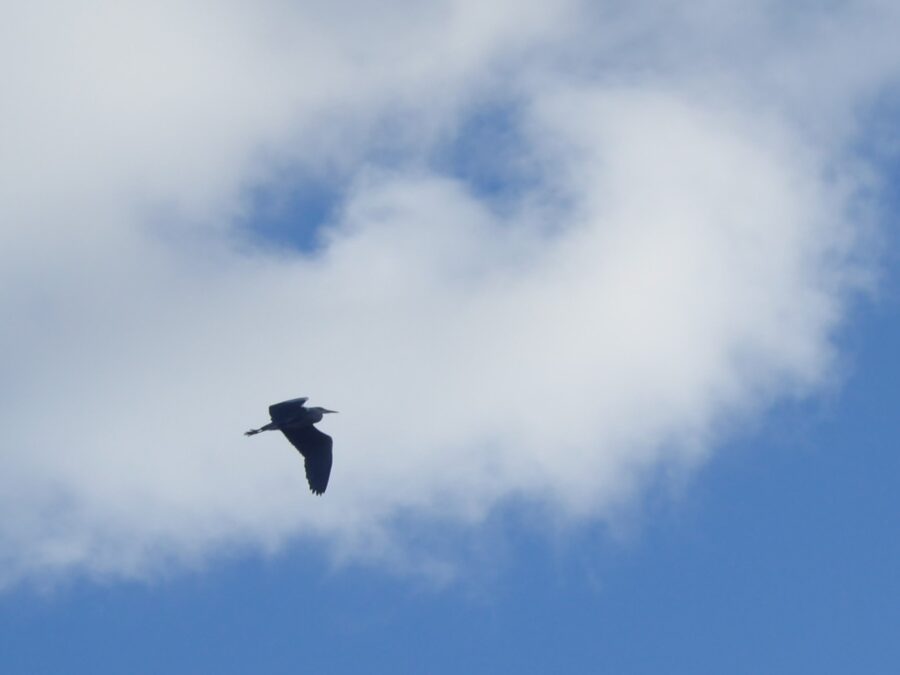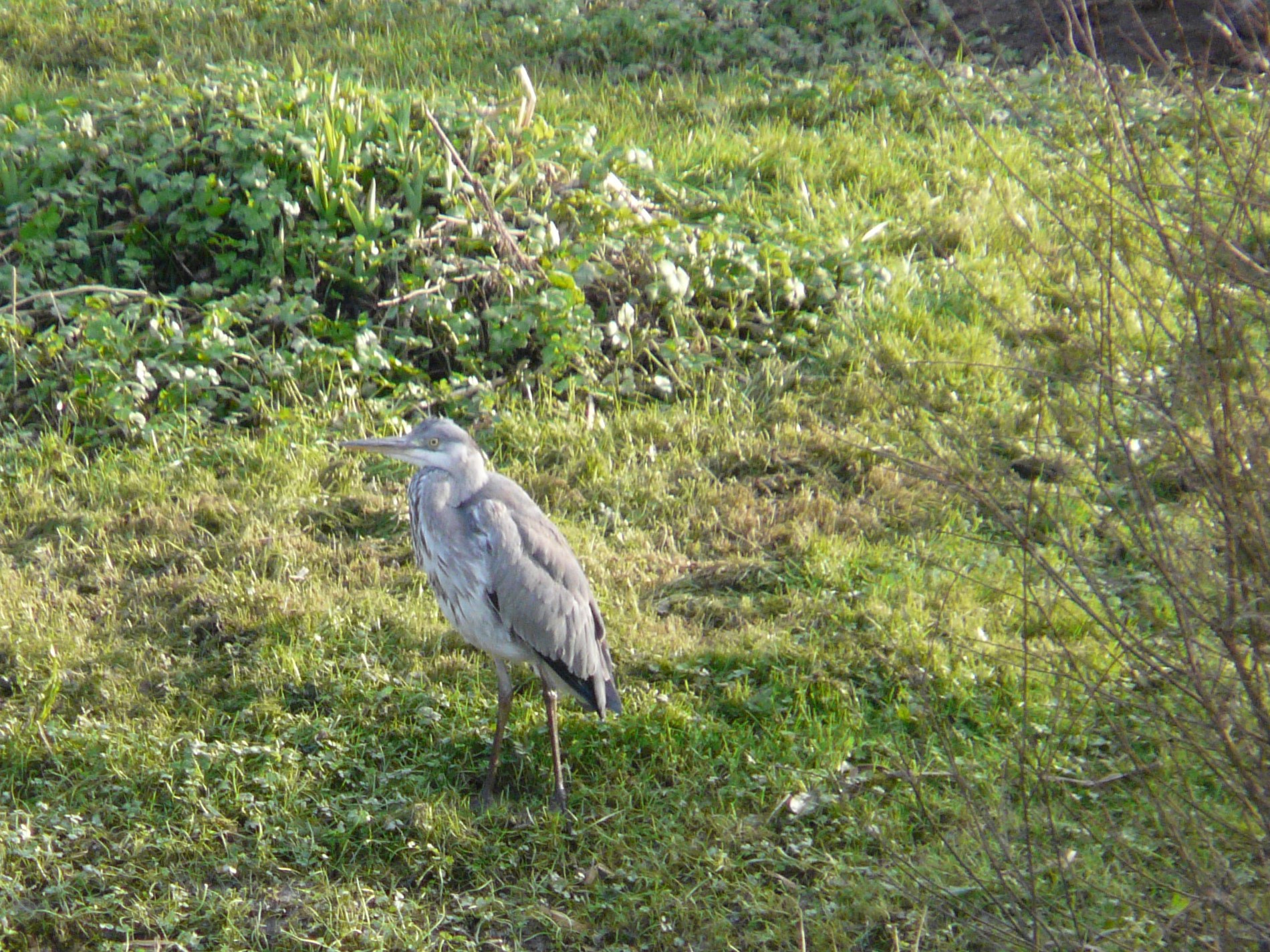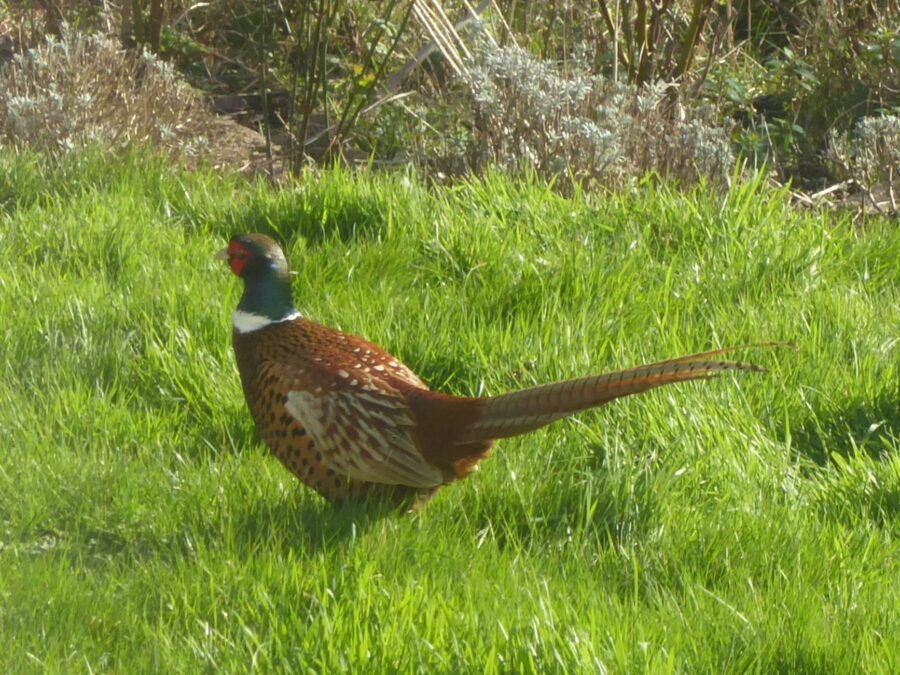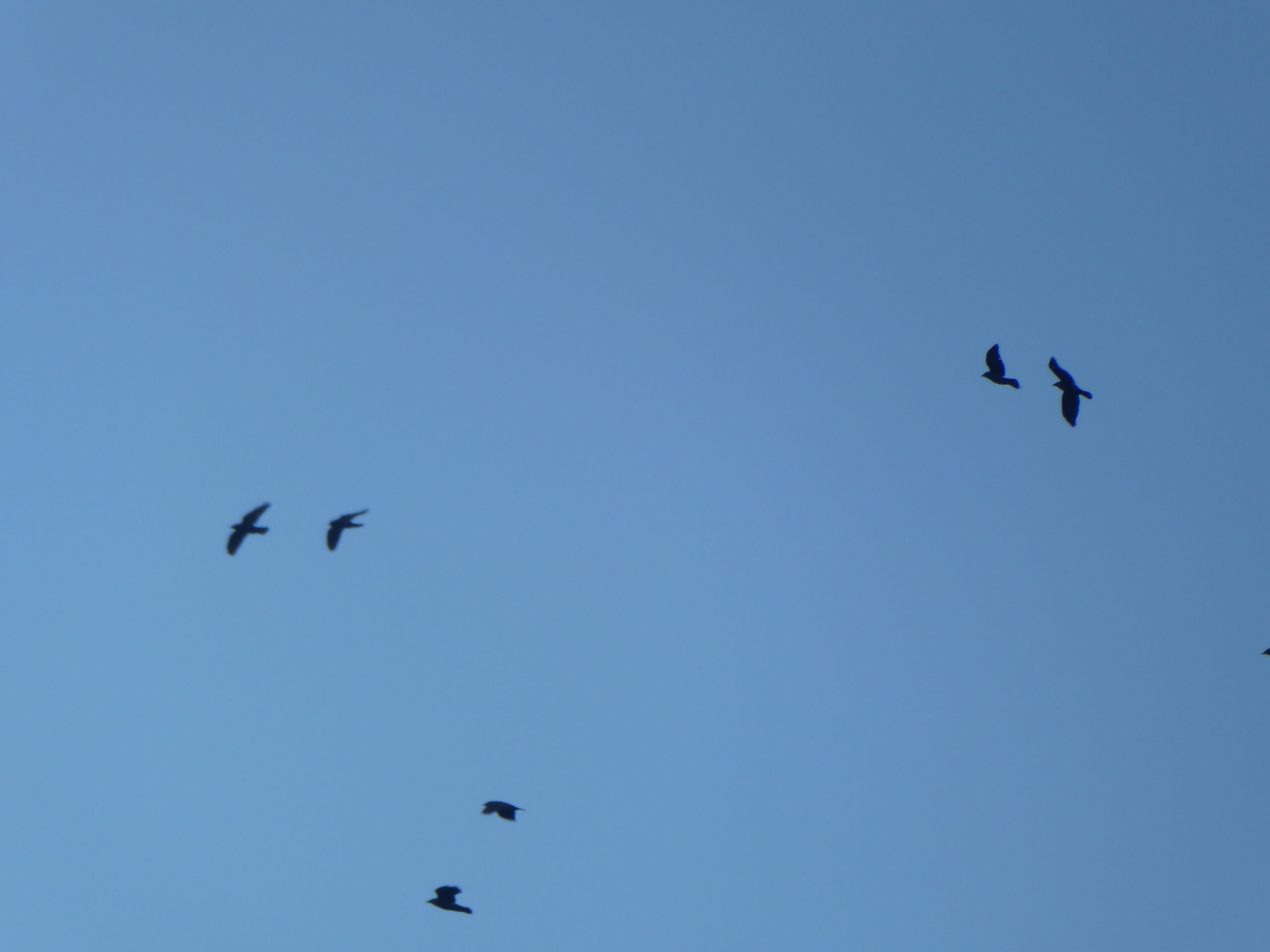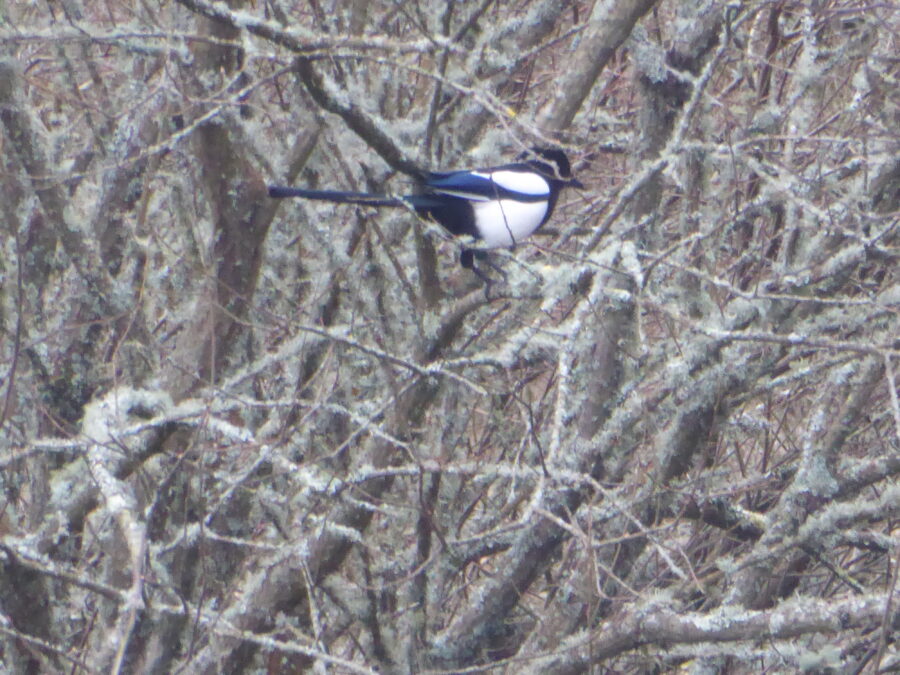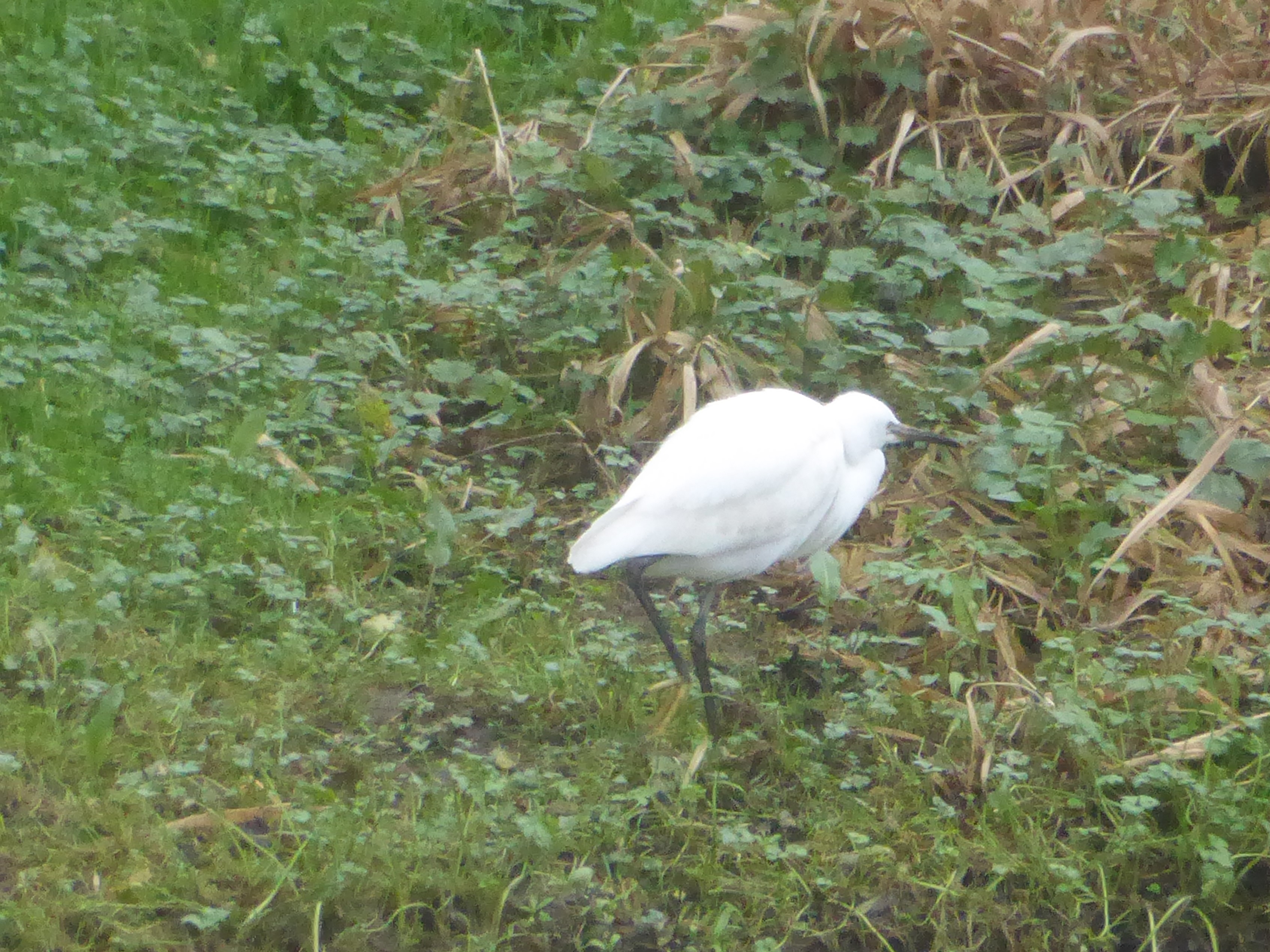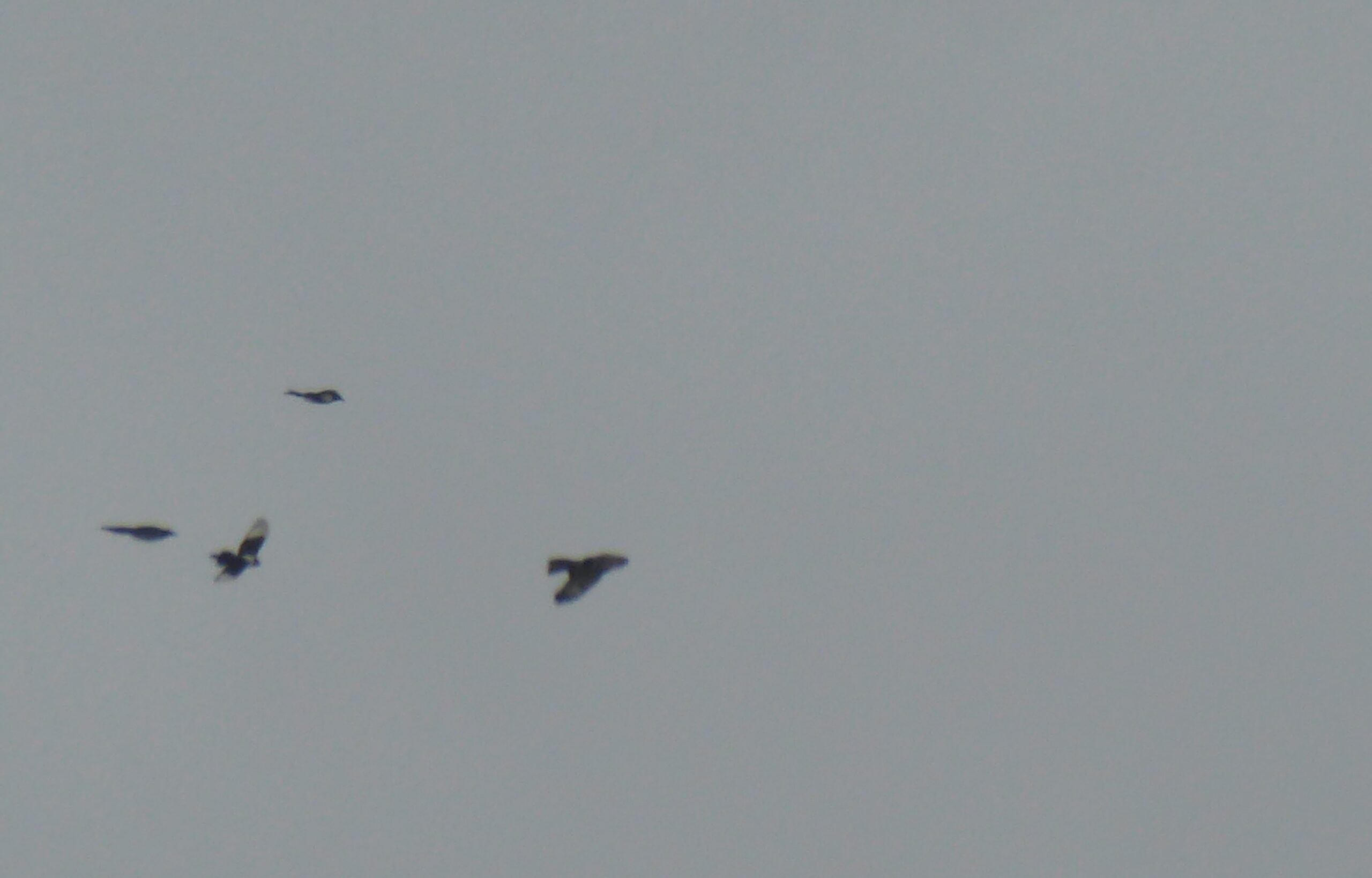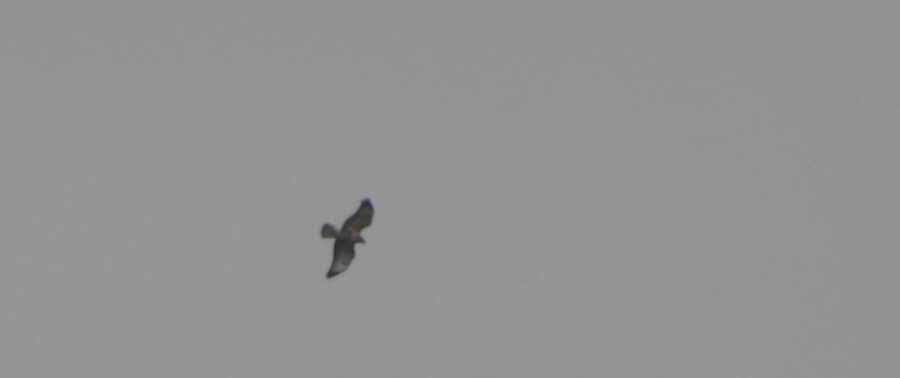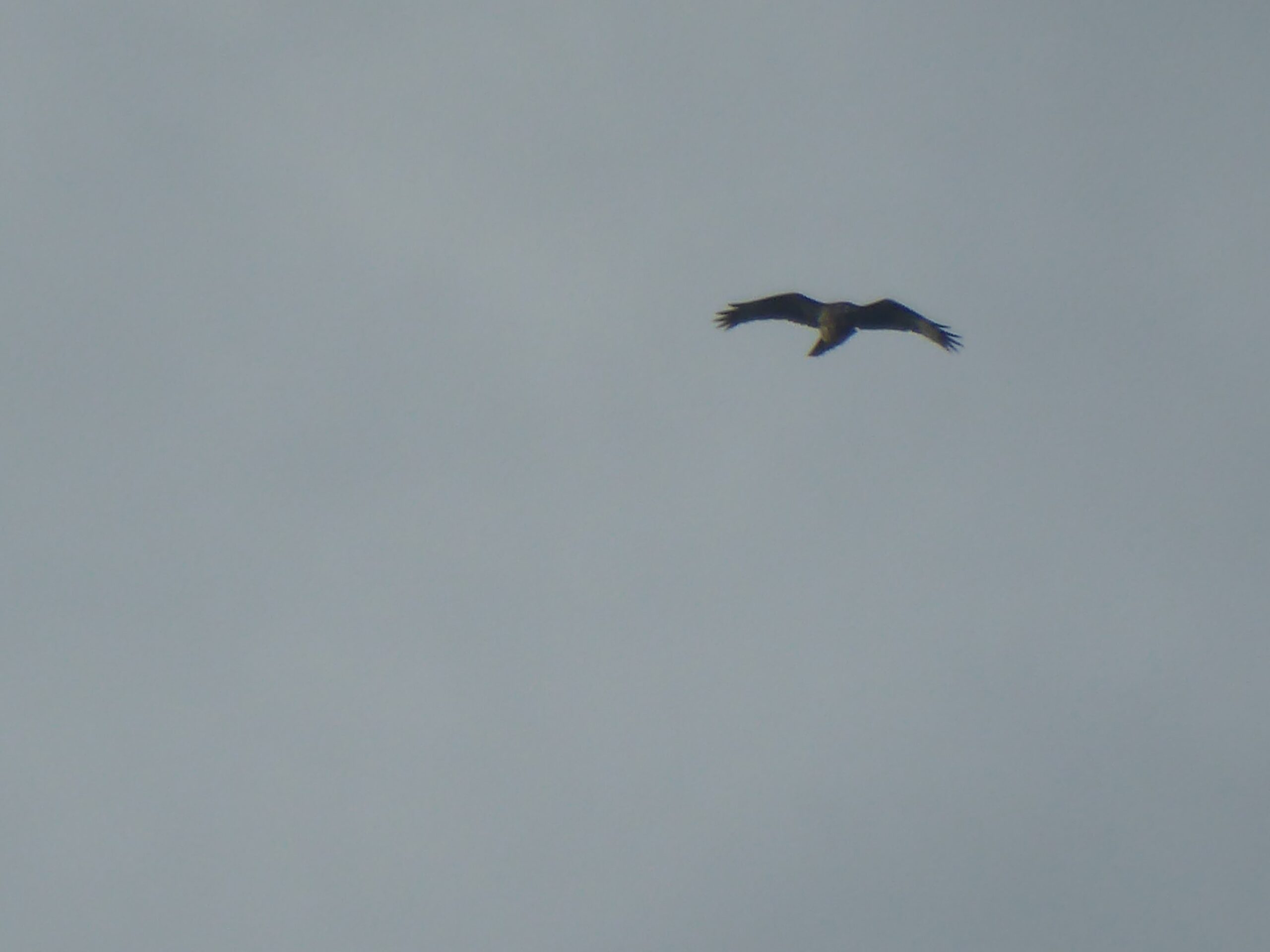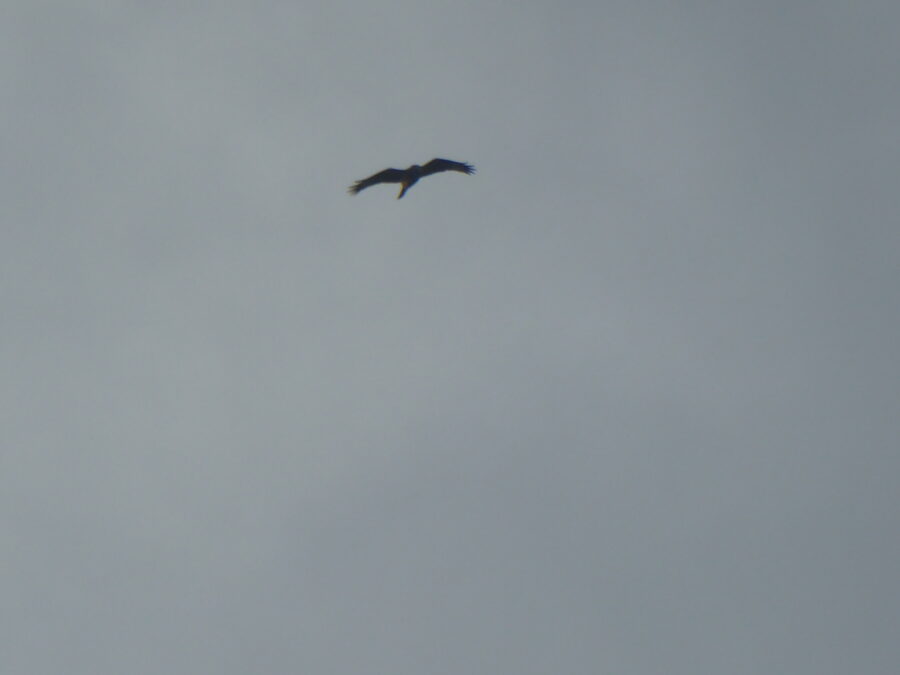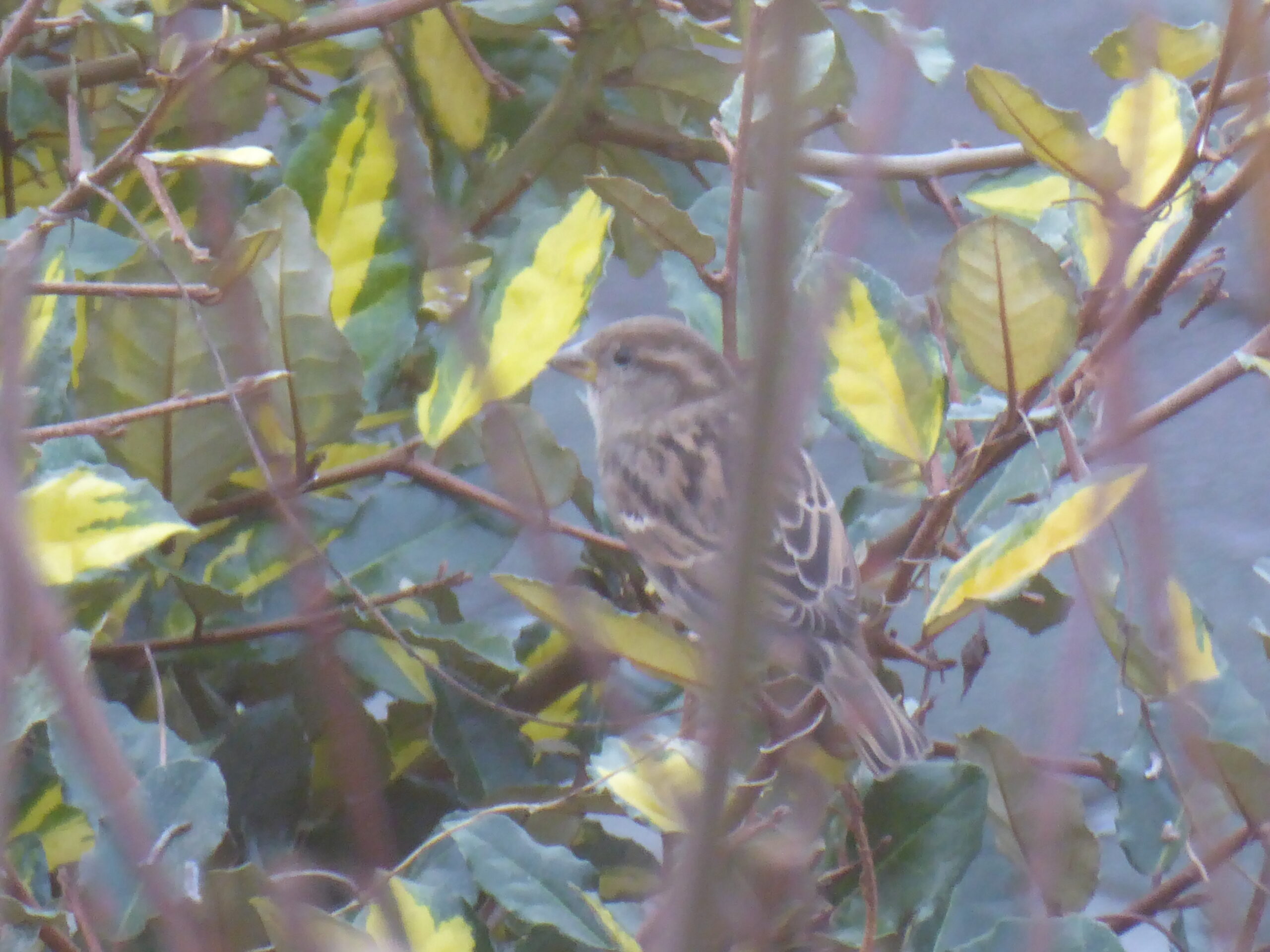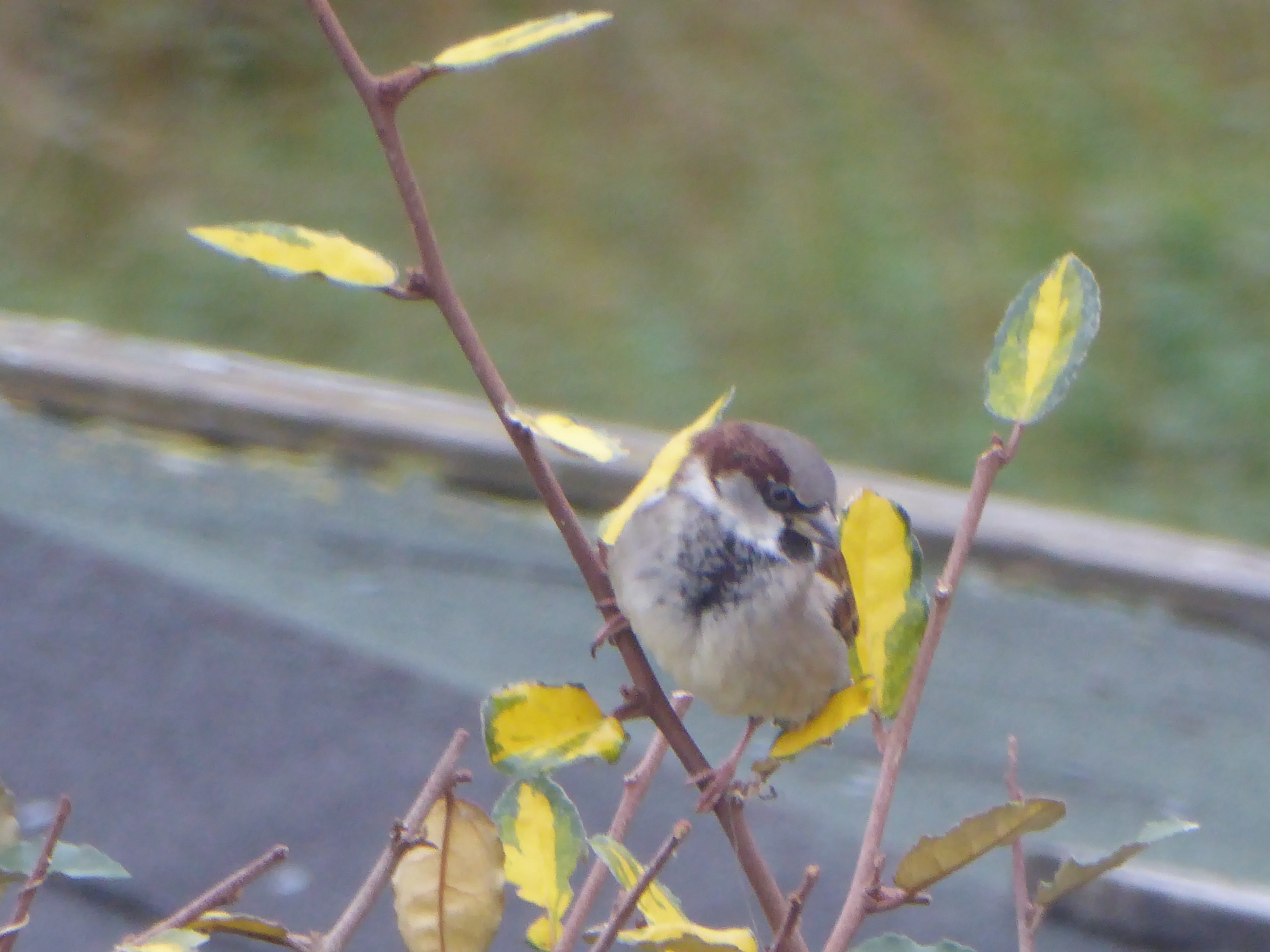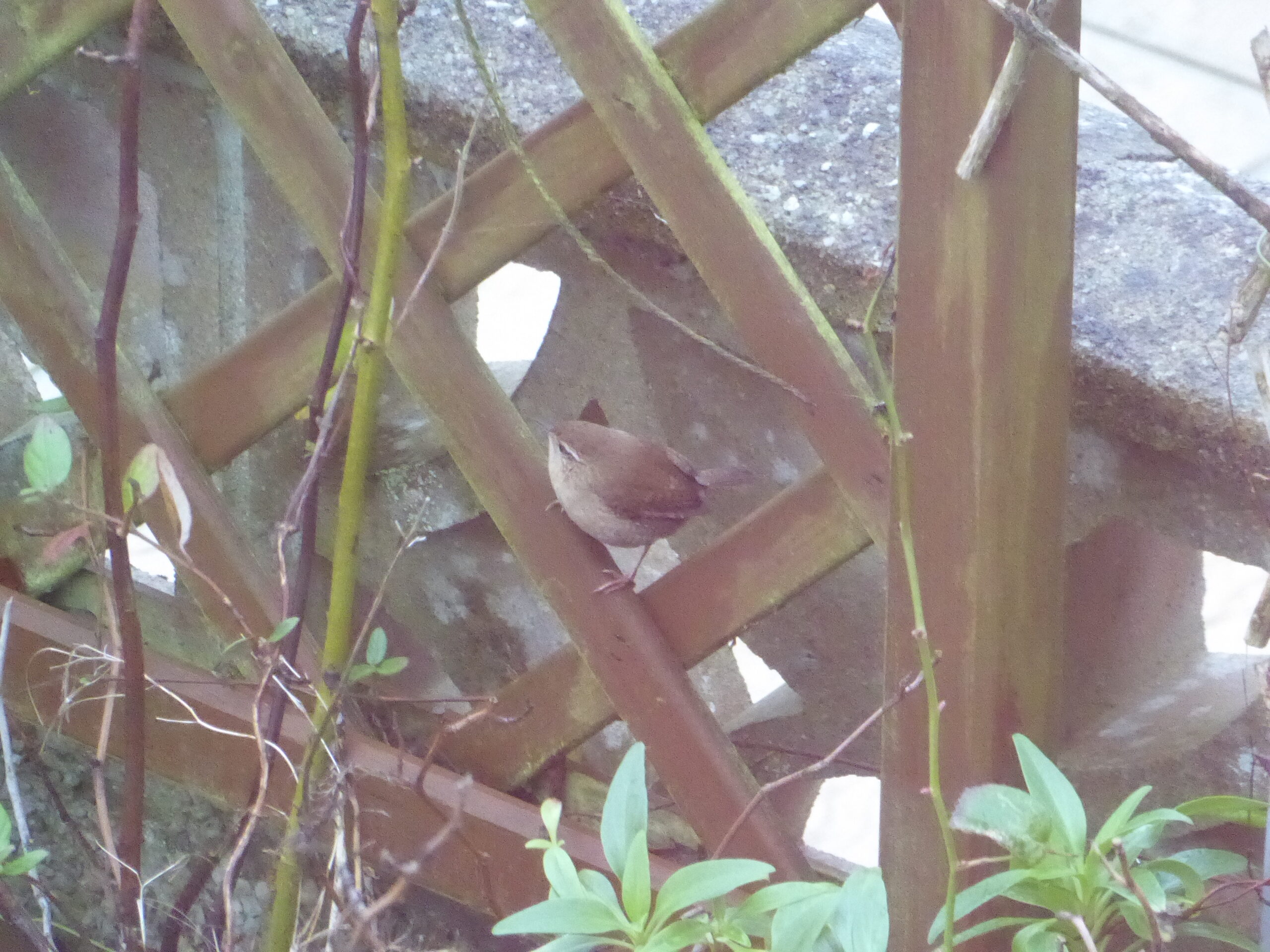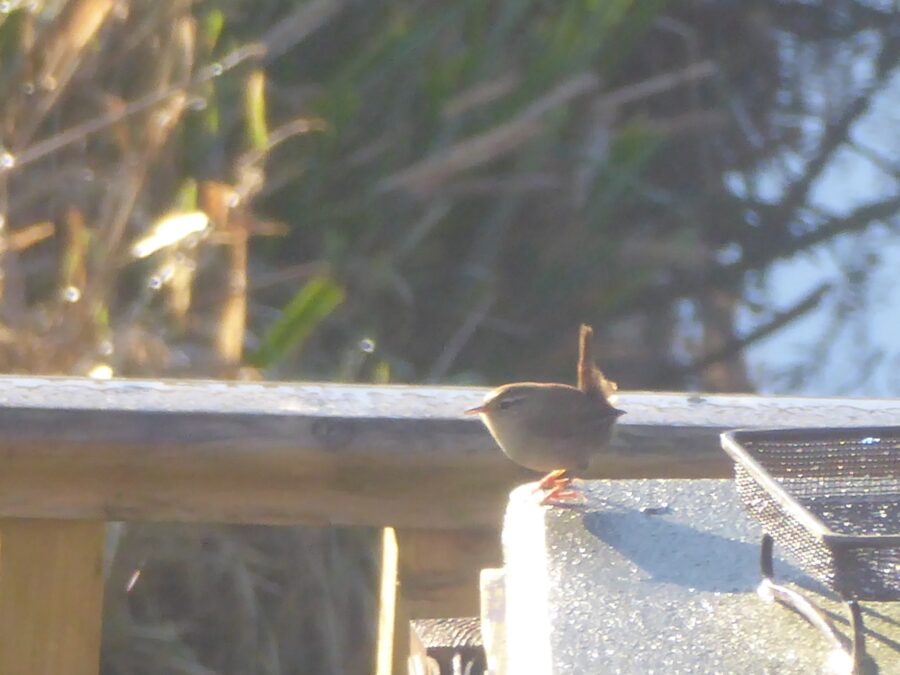Today we are bracing ourselves for the latest named storm, Isha – it’s windy, though not gale force as yet, grey and damp underfoot.
On Friday it was still cold and calm, with clear blue sky, and I stood on the decking camera at the ready to catch any of the small birds I haven’t yet managed to photograph. Just as I was about to give up hope, Mr C cried “Heron!”. A black dot on its way out to sea by the time I had my camera focused. The usual story! However, not only did the heron turn to fly up over the houses veering round to fly down to the coast again, but from out of nowhere another heron joined it and both then flew back up the valley over the watermeadow.
That wasn’t the end of the episode, though, as one of the herons returned about twenty minutes later and stood for a long while next door no doubt hoping to spear some lunch. I haven’t done any stream- or pond-dipping yet, but in the past we have seen little shrimpy things, tiny fish, and newts. Nothing major. In the winter when ponds are frozen over, herons will eat small waterbirds, chicks, frogs, or water voles, so perhaps this heron was hoping to see something in the grass.
The adult grey heron usually has a black crown and white nape and neck with black splashes on its breast and black feathers on its grey wings. This one doesn’t have a black crown, so may be a juvenile, though some adults do have a grey crown. To confirm the age of this heron, we’d have to see if its nape was white or grey.
